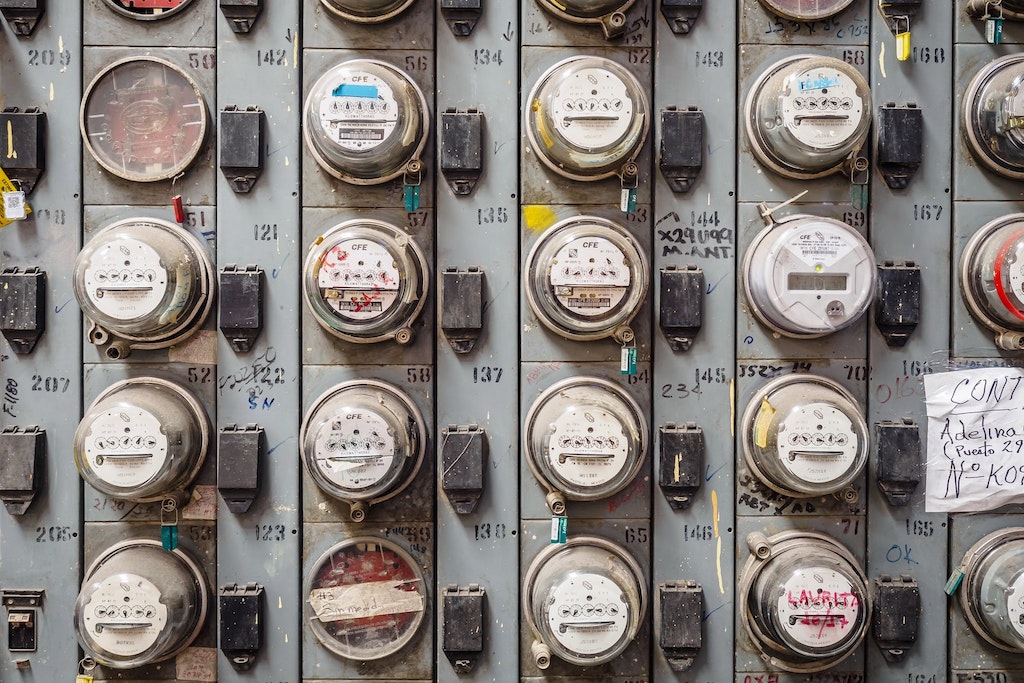With the UK's smart meter rollout in full swing, energy suppliers are keen to emphasise their benefits, such as being able to provide more accurate bills.
While smart meters are certainly a useful tool in helping you keep track of your energy consumption, there are some important disadvantages you may encounter with a smart meter which you should be aware of.
Top 10 smart meter problems
Issues with smart meters can range from them turning ‘dumb’ to leaving you unable to switch suppliers, and even losing control over your supply. If any of the below smart problems ring true, it might be time to give your energy supplier a call.

1. My smart meter has turned dumb
If you’ve got a first-generation smart meter (SMETS1) and have recently switched suppliers, you may find that your meter has turned 'dumb', meaning it has lost its ability to automatically take meter readings. This problem occurs because a SMETS1 meter can only send readings automatically to the supplier who installed it. If it does happen, you will either need to provide manual meter readings to your supplier or face receiving estimated bills which could be over or under your actual usage.
The second-generation of meters (SMETS2), which began being installed in 2018, overcome this problem as they are installed on the same network and the data they send is compatible with all suppliers.
While the Government has put in place a programme to migrate all SMETS1 meters onto the new data network, the process is ongoing with no current deadline in place.
If you've recently switched and found your SMETS1 meter has turned dumb, contact your new supplier to find out when your meter will be upgraded.
2. Smart prepayment meter customers cannot switch
If you are a prepayment customer with a first-generation SMETS1 smart meter and you switch suppliers, your smart meter may no longer allow you to top-up at all, cutting off your energy supply.
With smart prepayment, your supplier needs to be able to communicate with your gas and electricity meters electronically in order to load credit onto it. But if you switch suppliers with a SMETS1 meter fitted, your meter may turn ‘dumb’ and be unable to communicate with your new supplier, leaving you unable to top-up.
This means that, until your smart meter is upgraded or transferred to the new data network, you may be stuck with your existing supplier.
Is the regulator aware?
Yes. Second-generation (SMETS2) smart meters began rolling out in 2018, and the energy regulator Ofgem, gave a deadline to all energy suppliers that any first-generation (SMETS1) meters installed after 2019 would not count towards a supplier’s installation targets.
While the industry generally complied with this deadline, especially as the incentive has shifted toward installing SMETS2 meters, some energy suppliers have continued to install SMETS1 meters after this cutoff date.
3. Your energy can be cut off
Customers who pay by direct debit and fall into energy debt risk having their smart meter (SMETS1/SMETS2) switched remotely to prepayment, effectively cutting off their energy supply.
In the past, energy suppliers chasing customers who had failed to pay their bills could secure a warrant to enter a property and “force-fit” a prepayment meter. But the introduction of smart meters means suppliers can now switch customers from credit to prepayment remotely.
If your supplier doesn’t hold your correct contact details, you may find your energy cut off without advance warning. This can happen if you were switched to prepay without being aware of it, and then your credit ran out.
4. You may be vulnerable to cyber attacks
If your smart meter is working as it should, it will send meter readings automatically to your supplier regularly. Smart meters do not store or pass on personal information to your supplier.
However, a new category of tariff – known as Smart Time of Use (ToU) tariffs – have begun being introduced by a handful of energy suppliers. With ToU tariffs, unit rates for gas and electricity change every half an hour in response to energy prices on the wholesale market.
Smart meters on a ToU tariff will send meter readings to your supplier every half an hour, and although this information is transmitted via a secure network, there is a small risk of a cyber-attack on the network, allowing hackers to gain access to this data.
Access to this data would allow hackers to better understand a household’s energy consumption, using the data to determine when a home is unoccupied, making it a prime target for being burgled.

5. Savings are only temporary
Smart Time of Use tariffs are currently being touted as a great way to save money on energy, mostly during off-peak times. However, although customers may be tempted by the cheaper unit rates offered during this window, the cost of energy during peak times (generally early morning and early-to-late evening) is significantly higher, pushing customers into a situation where they only use energy when it’s completely necessary.
The fact that energy suppliers can now charge variable, surge prices every half an hour places the responsibility of managing the demand for energy onto customers. In the past, households were free to use their energy how and when they wanted, without having to worry about prices rising sharply at a moment’s notice.
And although the peak and off-peak rates for Time of Use tariffs may currently offer decent savings, once the majority of homes in Great Britain have been fitted with a smart meter, these rates may be withdrawn, especially as increased use of wind and solar causes short term fluctuations in electricity generation.
Finally, because Smart Time of Use tariffs are complex, with prices changing every half hour, it makes it difficult for customers to engage with their energy bills and understand the true cost of what they’re paying for their gas and electricity. With these tariffs, you are placing your trust wholly into the hands of your supplier, assuming they will not overcharge you. The historical behaviour of the energy sector suggests that this trust would not be justified.
6. Smart meter tariffs increase the poverty premium
Currently, tariffs that deliver the most savings are reserved for those with a smart credit meter paying by direct debit. Other benefits – such as discounts on Electric Vehicle (EV) charging and rebates on installing solar panels to selling back unused electricity to the grid via the Smart Export Guarantee – only benefit those who can afford these premium products and services.
Households with either a traditional (non-smart) meter, or vulnerable households with a prepayment meter, pay the most for their energy, effectively subsidising the rebates and discounts offered to smart credit meter customers.
7. Aggressive installation tactics from energy suppliers to meet rollout targets
The UK government first aimed to have every household in Great Britain fitted with a smart meter by the end of 2019. However, a report released on 14 June 2023 from the Department for Energy Security and Net Zero shows that only 57% of this target has been reached. The target has also now shifted from having 100% of all domestic households to 80% being fitted with a smart meter by the end of 2025.
Because of this, energy suppliers are under continued pressure to switch customers that are still on traditional meters to smart meters, with some employing aggressive tactics to achieve a switch.
Some customers have reported being bullied with threatening letters from their supplier, telling them they face higher bills unless they agree to having a smart meter installed.
Some customers have also reported that engineers have come onto their property to install a smart meter, even though they had repeatedly declined one.
Do I have to agree to a smart meter?
If you live at a property fitted with a smart meter, it is only possible to downgrade to a traditional meter in exceptional circumstances. And, if your supplier does allow you to downgrade, be aware that you will need to pay a fee which can be hundreds of pounds.
If you live at a property that currently has a traditional meter and you do not wish to upgrade to a smart meter, it is your right as an energy customer to refuse one. If you feel pressured to have one installed, you can and should make a formal complaint directly to your energy supplier.
8. Batteries could soon begin failing
The rollout of smart meters began in 2011, and all smart gas meters are fitted with an internal battery that powers them. The batteries in these gas meters are designed to last approximately 10 years and should signal when they’re running low by emitting a beeping sound.
Although this sound is designed to alert you to the fact your battery is running low, it will not act as a timer for when exactly the battery will fail, meaning once it starts beeping, your gas supply could be shut off at any time.
If you have noticed a beeping noise coming from your meter, contact your energy supplier as soon as possible. They will arrange for an engineer to come out and replace the battery.
9. Smart meter malfunctions to mistakenly display language in Welsh
Like any technological device, smart meters can sometimes go haywire, with some users in England and Scotland reporting that their In-Home Display (IHD) has suddenly switched its default display information from English to Welsh.
If this has happened to you, follow the steps below to switch your IHD back to English:
1. Tap the 'OK' button at the bottom of the IHD screen.
2. Press the right arrow until you see 'Gosodiadau Wedi anfon yr’ and tap OK.
3. Tap the right arrow 8 time until you see the option 'Dewis iaith Wedi anfon yr'. (If this doesn't work, you may need to try the next option, 'Clirio Gosodidau Wedi anfon yr'.) and tap OK.
4. Press the left arrow to select English, then hit OK.
10. Smart meters won’t save you money
A smart meter can only passively help you save money by displaying your usage in real-time via an in-home display (IHD). Seeing how much energy you’re using on a daily basis can make you more mindful of how and when you use your energy, understand if you are paying more or less than the average energy bill, and to help you make changes to your habits where necessary. But you still need to pay for the energy you use at the same rates as before.
The most effective way to save on your bills remains ensuring you’re on the best deal to suit your circumstances. Running a quote with Switchcraft can help identify if you should switch energy supplier.
Compare gas and electricity deals
We monitor the market and automatically switch you to better deals for free.
